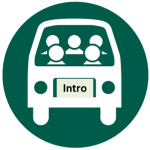 Depending on your point of view, Process Analysis is either very hard or very easy. In actual fact, it is both, mostly because there are so many ways of doing it. Personally I always recommend that when starting a new Process Analysis you begin at a very high level, then “peel the onion” with successively more detailed analysis. In order to do this the first step in any new process analysis should be to step back and ask the question “What, ultimately, is this process meant to accomplish?” Without an answer to this question any further analysis, while it may lead to some improvement, will never be able to soar to the level of quantum improvements or innovations. Instead of looking at a process and seeing a multitude of new, exciting and truly game changing possibilities, you will end up restricting yourself to just trying to make the current process better. While this used to be good enough, with the ever increasing changes in technology, society and how businesses are run in today’s world, we need innovative changes and improvement that grow our corporate competitiveness. It is only after first clarifying the intent of the process (the big picture) that we can then move in and look at the detailed process (the small picture). As we go through the analysis we need to keep the intent of the process firmly in mind and ensure that any changes or improvements support this larger vision for the process.
Depending on your point of view, Process Analysis is either very hard or very easy. In actual fact, it is both, mostly because there are so many ways of doing it. Personally I always recommend that when starting a new Process Analysis you begin at a very high level, then “peel the onion” with successively more detailed analysis. In order to do this the first step in any new process analysis should be to step back and ask the question “What, ultimately, is this process meant to accomplish?” Without an answer to this question any further analysis, while it may lead to some improvement, will never be able to soar to the level of quantum improvements or innovations. Instead of looking at a process and seeing a multitude of new, exciting and truly game changing possibilities, you will end up restricting yourself to just trying to make the current process better. While this used to be good enough, with the ever increasing changes in technology, society and how businesses are run in today’s world, we need innovative changes and improvement that grow our corporate competitiveness. It is only after first clarifying the intent of the process (the big picture) that we can then move in and look at the detailed process (the small picture). As we go through the analysis we need to keep the intent of the process firmly in mind and ensure that any changes or improvements support this larger vision for the process.
Let’s take a specific example of a process that almost all of us have to deal with on a regular basis – commuting. We will start by apply the question “What, ultimately, is this process meant to accomplish?” to the larger commuting process. Several answers pop to mind immediately such as: get people to work on time, fast movement of people within an urban center, save the world by getting rid of cars, etc. This highlights a major problem with the process, ask 100 people what commuting is supposed to accomplish and you will probably get 200 answers, some of which are quite unique. This at least partially explains why society’s answers to the commuting question always seems to be a patchwork of solutions. If we cannot agree on the why, is it possible to agree on the how?
In order to keep this moving I am going to suggest an answer, not because it is the best answer or even necessarily a correct answer. We could spend the next year debating the correct answer but for this posting I just need a reasonable answer, so here is my suggestion – The purpose of the commuting process is to move people and products from one point to another point as effectively as possible using the minimum of resources possible. Does that sound kind of vague to you? Absolutely, but I DID say “big picture”. As we go through each subsequent layer the various pieces of that statement will become more detailed. So what does the statement give us that jumping straight into a detailed mapping process wouldn’t have? It gives us a starting point, a basis for analysis, some additional questions and, ultimately, consensus on what we are trying to accomplish.
What do I mean by additional questions? Wasn’t this supposed to answer the question? Yes, but in order to ensure consensus we need to ensure we are all at the same starting point. So what sort of questions might this statement lead to? The first one that comes to my mind is: Why people and products? Isn’t this just about moving people? Well actually, no, or at least not entirely. In today’s world there is always material moving from one place to another and some of it is going to the same places as the people. They are using some of the same resources (such as road space) so we need to consider them as part of the issue. Yet when we listen to debates on improvement to commuting, when was the last time you heard anyone seriously consider the movement of material?
A second, and probably more important question is, what type of resources are we talking about? There are a lot of different resources that come into play during the commuting process such as: money, roads, transportation modes (cars, buses, trains…), time, political will (yes that is a valuable resource), etc. This is not all the resources but it gives us a start. So why is identifying and considering resources important? Resources what constrains our ability to change a process. If there are not enough of a particular resource the process is not viable. For example, the first resource that comes to most people’s mind is time, or, how long does the commute take. If we are looking at a process change that would require 8 hours in each direction it is probably not a viable solution. Keep in mind that time is just one resource and as in any process analysis, we need to ensure efficient use of all the resources to achieve the greatest effect at the lowest cost. For a longer discussion of the resources please check out COMMUTING AND PROCESS ANALYSIS PART 2 – RESOURCES.
The main point to be made from this discussion is that Process Analysis is NOT just making a map and looking for small improvements to the process. Instead we need to look past the process to the intent and then find changes and innovations that address the why of the process better. Since this is obviously a bigger discussion than it first appears to be, I have broken it down into 4 separate posts. The 4 posts are an introduction, resources, tools and a summary. I hope I have tweaked your interest enough to move on and join me in Part 2.
To go to Commuting and Process Analysis Part 2 – Resources click here

